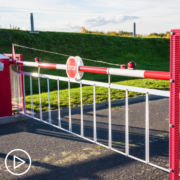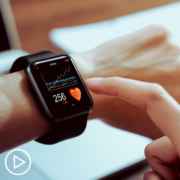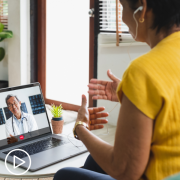Using Telemedicine to Help MPN Clinical Trial Enrollment After COVID-19
Using Telemedicine to Help MPN Clinical Trial Enrollment After COVID-19 from Patient Empowerment Network on Vimeo.
How can myeloproliferative neoplasm (MPN) clinical trial enrollment be aided by telemedicine? MPN expert Dr. Jamile Shammo shares ideas for how clinical trial protocols can be adjusted with telemedicine and other remote options for improved patient care.
See More from MPN TelemEDucation
Related Resources:

Pros and Cons of Telemedicine From an MPN Patient Perspective |

|

|
Transcript:
Lisa Hatfield:
With the nature of telemedicine being virtual and the fact that clinical trials, thus far, have only been conducted in-person, it may seem strange or impossible to try to move clinical trial participation to the virtual space. However, clinical trials are so important to research and getting the best care to patients, that researchers are beginning to figure out how to make this a reality. MPN expert Dr. Jamille Shammo reiterates the importance of clinical trials by saying:
Dr. Jamile Shammo:
There’s no doubt that COVID has certainly impacted our ability to enroll patients on clinical trials. There have been a lot of governing bodies that have created various rules and regulations around that to facilitate enrolling patients on clinical trials, and I think right now we are seeing that this has become feasible, such that we are able to enroll patients yet again on the clinical trial. So, now I think that we have the vaccine that is available, it has become a little bit more feasible and possible to do so. So, this should not stop us. I think we should continue to seek better treatments for MPN patients actually the only way to do so is by, you know, only patients on trials.
Lisa Hatfield:
So what ideas do researchers have, to start making clinical trials available via telemedicine?
They believe in simpler clinical research protocols that not only allow telemedicine for nontreatment visits and consents, but also require fewer laboratory tests and imaging studies that may burden patients with extra visits and reduce the regulatory burden for research staff as well. It is important to specify that patient visits and/or consents can be conducted remotely in the trial protocol.
A patient-centric approach toward clinical research needs to be explored in virtual trial assessments. A 2022 ESMO journal article by Sessa et al described new approaches to oncology clinical trials, including the use of electronic patient consent forms and medical updates, local laboratories for blood tests, home nursing visits for blood draws or infusions, and electronic patient-reported outcomes. It also stressed the importance of working together with local doctors, direct-to-patient drug delivery, and remote monitoring to increase patient convenience.
While there is still more information to consider, this gives us hope on how trial access can be improved and approached in the future for better MPN care.
Share Your Feedback:
Create your own user feedback survey










